Getting around Japan can seem daunting, no matter if it’s your first or fifth visit. Navigating different train networks, getting from the airport to the city, and figuring out your bus fare can be challenging for even the most experienced Japan traveller. But an understanding of the different modes of transport in Japan can help you plan your trip.
And flying to Japan from Australia is a breeze with a number of direct flights from various cities. Did we mention that you can fly to Japan for less, too? By harnessing the power of frequent flyer points, you could be gorging on gyoza in Ginza, shopping up a storm in Shinsaibashi, or over-indulging in okonomiyaki in Osaka. Check out how you can use Qantas and Velocity Points to fly Business Class to Japan.
If you’re new to the points game, taking advantage of credit card offers can have you jetting off to Japan sooner. Cards like the Westpac Altitude Qantas Platinum, Qantas Premier Platinum and St.George Amplify Platinum – Qantas Rewards offer a generous amount of bonus points. And our beginner’s guides to the Qantas Frequent Flyer Program and Velocity Frequent Flyer Program are filled with all the tips and tricks you need to know to leverage your points on flights to Japan.
Ready to plan your Japan holiday? We take a look at some of the cheapest and easiest ways to get around Japan.
Getting from Narita International Airport (NRT) to Tokyo
Narita International Airport (NRT) is located around 64 kilometres east of central Tokyo. It is one of two international airports in Tokyo, and one of the main entry points when flying to Japan from Australia.
Travelling from Narita International Airport (NRT) by train
The most common and easiest way to travel from Narita Airport to Tokyo is via train. The JR Narita Express (NEX) train departs Narita Airport every 30 to 60 minutes and takes approximately one hour to reach central Tokyo. The NEX services the major stations of Tokyo, Shinagawa, Shibuya, Shinjuku and Ikebukuro. Shinagawa station connects to Haneda International Airport, so the NEX is an easy way to transfer between Tokyo’s two biggest airports.
Some NEX services go beyond the Tokyo metropolitan area to Omiya, Yokohama and Ofuna. No matter which station you’re travelling to on the NEX, it’s important to check the signs at Narita Airport before you board the train. Many services operate direct to Tokyo Station, before the train splits in two to service different areas. That’s right – if you jump on the wrong carriage, you could be heading in a completely different direction after Tokyo Station. For the most part, the front few carriages of the train will take you to the Tokyo metropolitan area, including Shibuya and Shinjuku, while the back few carriages can go all the way to Yokohama. Read the signs carefully for the exact carriage numbers that travel to your destination to ensure you hop on the right one.
Given that it’s a JR line, the NEX is fully covered by the JR Pass which can be activated at Narita Airport. But if you’ve got more travelling to do through Japan and don’t want to activate your pass just yet, a one-way ticket starts at around ¥3000 and differs depending on your final destination.
While the NEX isn’t the only train from Narita Airport to Tokyo, it’s certainly the most popular line, especially for JR Pass holders. Another option is the Keisei Skyliner, which can get you from Narita Airport to Ueno in Tokyo in around 40 minutes. But if you’re travelling beyond Ueno Station, you’ll need to transfer to the JR Yamanote line or a Tokyo Metro train.
Travelling from Narita International Airport (NRT) by taxi
A taxi is the most expensive way to get from Narita Airport to central Tokyo. Prices start from around ¥20,000 – roughly AU$200 – and can increase depending on the traffic and time of day. If you absolutely have to, metred taxis can be found outside the arrivals hall.
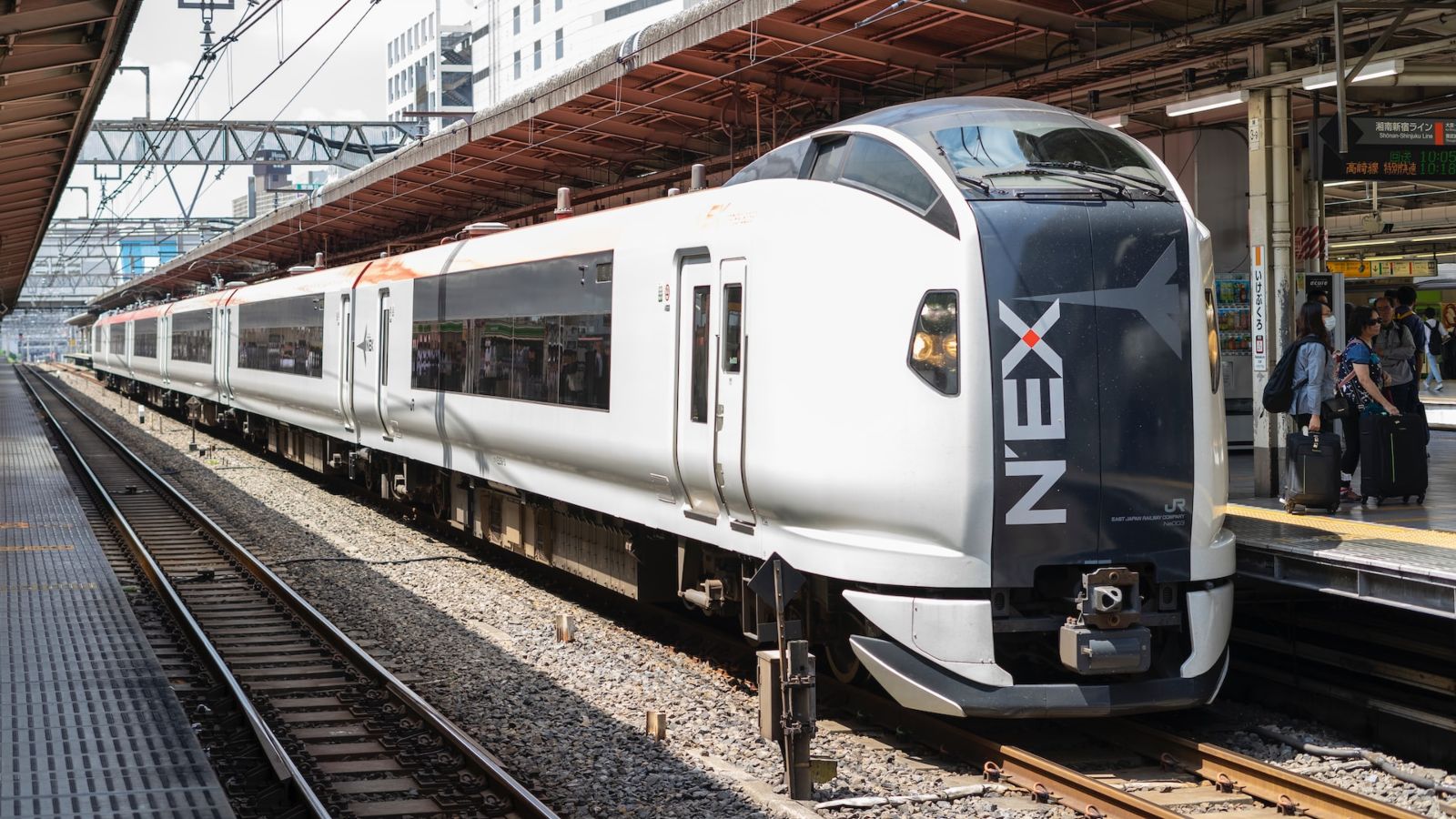
Getting from Haneda International Airport (HND) to Tokyo
Haneda International Airport (HND) is located around 30 kilometres south of the Tokyo metropolitan area. It’s Japan’s busiest airport, due largely to its handling of domestic flights.
Travelling from Haneda International Airport (HND) by monorail
Haneda Airport is connected to Tokyo by monorail and the trip takes just 15 minutes to reach Hamamatsucho Station in central Tokyo. From here you can reach all major areas in Tokyo by transferring to the JR Yamanote Line city loop train. Hamamatsucho Station is also serviced by the JR Keihin-Tohoku Line which runs to areas beyond Tokyo including Saitama, Kawaguchi, Kawasaki and Yokohama.
Although it’s not a JR line, you can use your JR Pass to travel from Haneda Airport on the Tokyo Monorail. To do so, you’ll need to activate your JR Pass at the airport. But unless you’re planning to travel to another city the following day, it may not be economical to activate your JR Pass to cover such a short trip. A one-way monorail ticket from Haneda Airport to Hamamatsucho Station costs around ¥490. If you’re travelling onwards via the Yamanote Line, ticket prices depend on the distance and start from ¥140.
The Tokyo Monorail is undoubtedly one of the cheapest and easiest ways to get from Haneda Airport to Tokyo. If you’re arriving late, it’s important to note that the last monorail service departs Haneda Airport at around 11:30 pm. There are designated luggage storage areas on the Tokyo Monorail, so you can rest assured that your luggage won’t roll around.
Travelling from Haneda International Airport (HND) by bus
If you’re flying into Haneda Airport late at night, a bus may be your only transport option to Tokyo. Keikyu Airport Limousine buses operate from all three terminals at Haneda Airport and take approximately 45 minutes to reach Tokyo, depending on traffic. Buses connect travellers to various stations in the city, including Tokyo, Shibuya and Kichijoji.
The cost of a bus from Haneda Airport to Tokyo varies depending on your final destination and the time of day you’re travelling. As a guide, you can expect to pay around ¥930 for a one-way ticket during the day. Night buses start from around ¥1,860.
The benefit of catching a bus from Haneda Airport to Tokyo is that it’s the only form of transport that operates at night. Buses have ample luggage storage, offer excellent connectivity, and allow you to travel directly to various stations in Tokyo without changing services. However, it’s the slowest way to get to Tokyo from Haneda Airport.
Travelling from Haneda International Airport (HND) by train
The Keikyu Railway Train operates from Haneda Airport and takes just 13 minutes to get to Shinagawa Station in central Tokyo. Trains run from approximately 5 am, with the final departure from Haneda Airport around midnight. They don’t run as frequently as the monorail, but ticket prices are slightly cheaper. A one-way train ticket to Shinagawa Station from Haneda Airport costs around ¥410.
Shinagawa Station is a major hub in Tokyo, serviced by several JR lines including the Yamanote city loop. The Tokaido Shinkansen also passes through this station, connecting Tokyo to Yokohama, Nagoya, Kyoto and Osaka.
The cost and travel time from Haneda Airport to Tokyo are similar on the monorail and train. If you’re staying in central Tokyo, both options allow easy access to the JR Yamanote loop. Ultimately, it comes down to your final destination and preference when travelling from Haneda Airport to Tokyo.
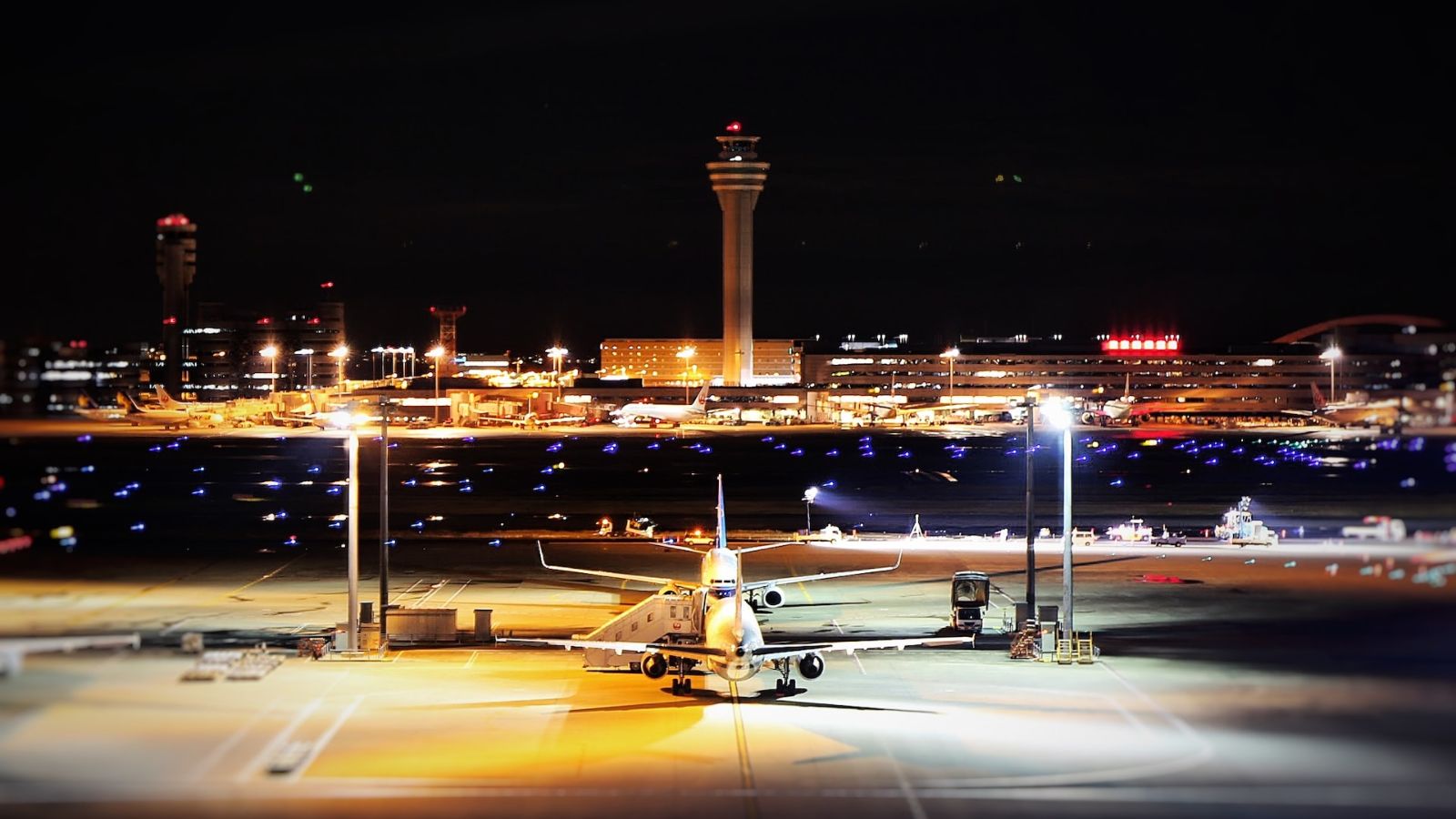
Getting from Kansai International Airport (KIX) to Osaka and Kyoto
Kansai International Airport (KIX) is the main airport of the Kansai region of Japan, encompassing the cities of Osaka, Kyoto, Kobe and others. Kansai Airport is located around 50 kilometres southwest of central Osaka and is another main entry point when flying to Japan from Australia.
Travelling from Kansai International Airport (KIX) by train to Osaka
The train is the easiest way to travel from Kansai Airport to central Osaka. The JR Kansai Airport Rapid Service operates from the airport to the major stations of Tennoji and Osaka in the city. The trip takes around 40 minutes and 65 minutes respectively, with a one-way ticket starting at around ¥1,000.
Another option is the Nankai Airport Limited Express Rapi:t which takes around 35 minutes to reach Namba Station. This station is adjacent to Dotonbori, a popular entertainment district, and Shinsaibashi, Osaka’s most well-known shopping destination. A one-way train ticket on the Rapi:t costs around ¥1,130.
The JR Kansai Airport Express Haruka is another option if you’ve got a JR Pass. The train stops at Tennoji Station and Shin-Osaka Station and takes 35 minutes and 50 minutes respectively. If you don’t have a JR Pass or don’t want to activate it just yet, a one-way fare will set you back around ¥2,330.
When travelling to the Osaka metropolitan area by train, it’s important to note that Shin-Osaka Station and Osaka Station are two different stations. This can influence which train to catch from Kansai Airport as no single line services both stations. But if you find yourself at the wrong station, there’s no need to worry. The JR Tokaido-Sanyo line runs between the two stations and takes only three minutes.
Travelling from Kansai International Airport (KIX) by train to Kyoto
The quickest and easiest way to get from Kansai Airport to Kyoto is by train. The JR Kansai Airport Express Haruka runs between the airport and Kyoto, stopping at Tennoji and Shin-Osaka. The trip from Kansai Airport to Kyoto takes around 75 minutes and costs around ¥2,850.
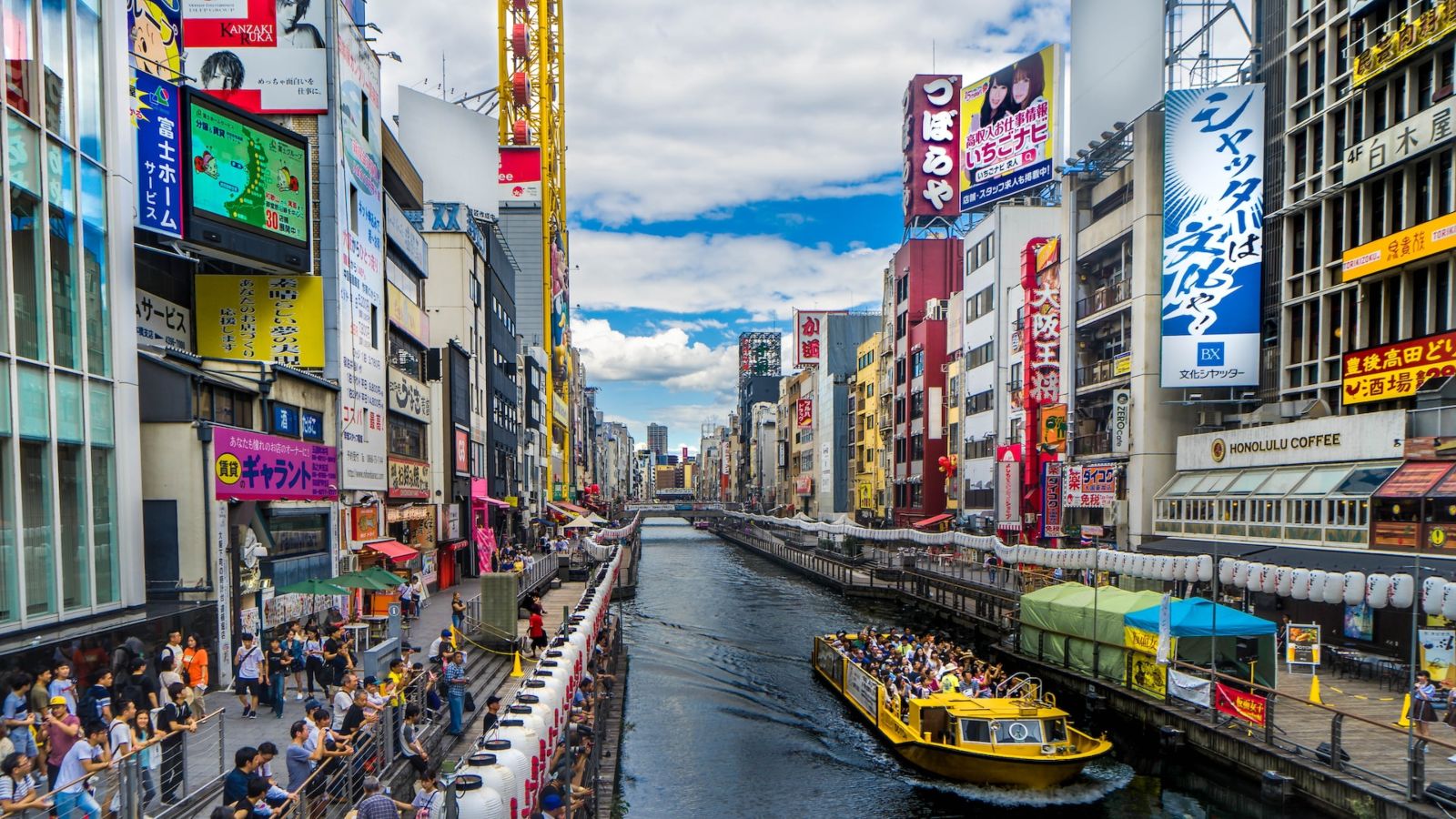
How to get around in Japan
Japan’s vast public transport network is known for being one of the most efficient and punctual in the world. But first-time visitors to Japan can find the sheer size of the network overwhelming – not to mention the small differences that can occur across companies and regions.
Read on for some of the most common ways to get around in Japan.
Train
Trains are often the easiest and cheapest way for tourists to get around in Japan. Most major cities have their own rapid transit network, as well as privately-owned networks.
Different train networks require different tickets. For example, if you transfer from a Tokyo Metro train to a JR train, you’ll need to pass through the Tokyo Metro exit, and re-enter the JR system with a JR ticket. Pricing differs across railway companies, and it’s important to consider your final destination when planning a route. While one network may be cheaper, the trains may be slower. Similarly, some private networks offer limited express routes for a premium price.
Don’t worry if this all seems overwhelming. Even the most seasoned travellers to Japan can find it difficult to navigate the country’s vast rail system. If it’s your first time in Japan, stick to the major rail systems. The Tokyo Metro, Osaka Metro and Kyoto Municipal Subway have an extensive network, with ticket machines and signage in English to help you get around. Similarly, the JR network is an easy and efficient way to travel locally and between cities, with trains connecting you to major hubs.
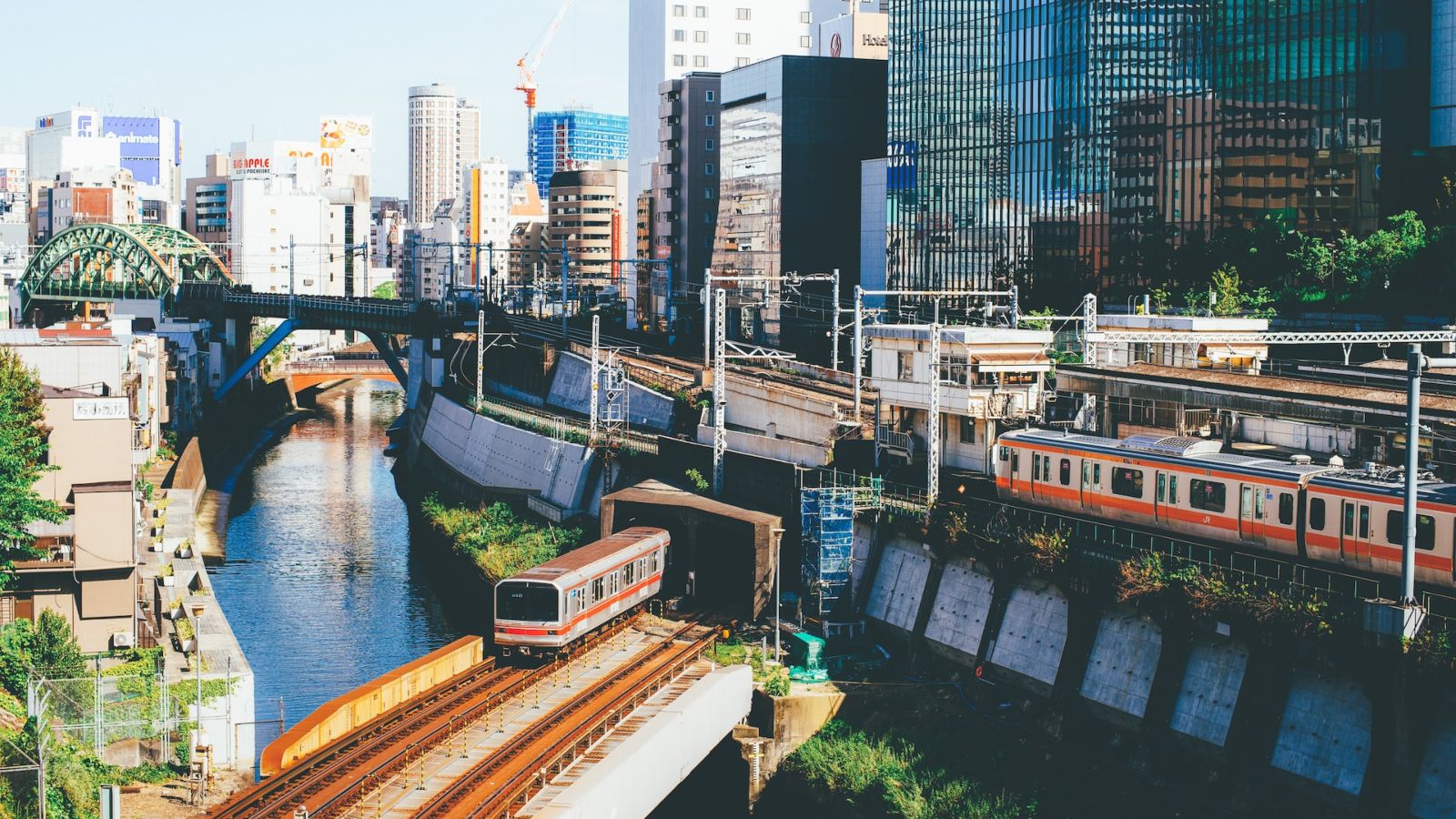
Bus
In major cities like Tokyo and Osaka, buses supplement the extensive train networks. While they are slower than trains, buses can be a cheaper and easier alternative to reach your destination, particularly if you’re staying outside of the city.
In smaller cities, buses may be the primary form of public transport. On most local buses in Japan, you’ll enter through the rear door and collect a small ticket. Hold onto this ticket as this will determine the fare you pay at the end of your journey. A sign above the driver shows the stops and the corresponding fare. Exit the bus at the front and put your ticket and fare into the box next to the driver. Alternatively, if you’re using a prepaid travel card, you’ll only need to touch on when you board and touch off at your destination. The process is different in larger cities, where you may need to enter at the front of the bus and pay a fixed fare. If in doubt, follow the locals.
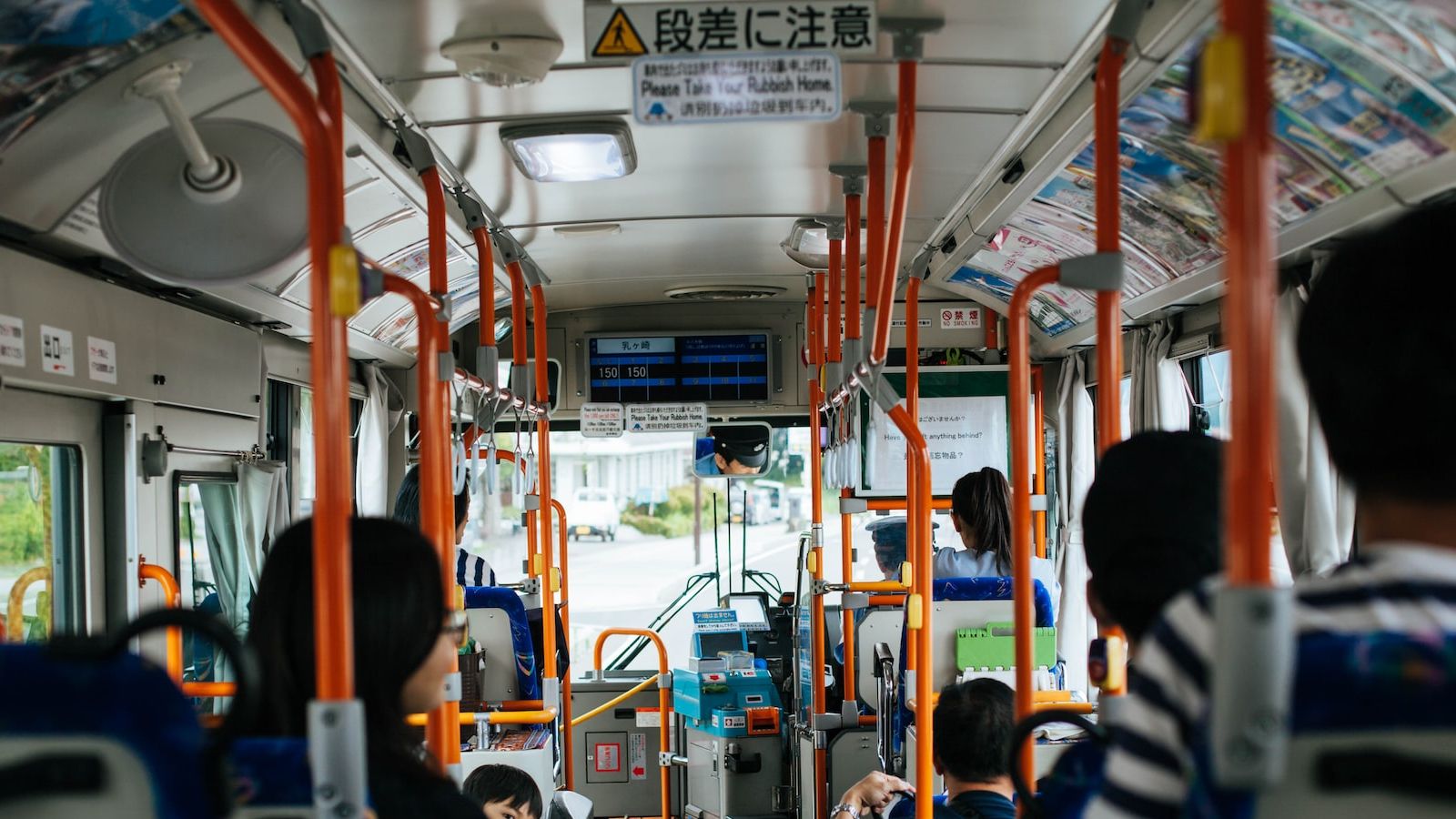
Taxi
While trains are the most efficient way to get around in Japan, there are some situations that warrant the need for a taxi. For example, if you’ve had a big night in Shinjuku and the trains have stopped running, or if you find yourself traversing rural Japan.
Taxis in Japan are expensive and inconvenient when compared to public transport. As a guide, you can expect prices to be similar to Australia. However, they are clean, safe, and comfortable, and operate on a meter.
Taxis are readily available in major areas and can be hailed from the side of the road. Keep an eye out for taxis with a red sign illuminated as this indicates that they are vacant. Alternatively, the JapanTaxi app covers all 47 prefectures and is a useful way to book and pay for a taxi.
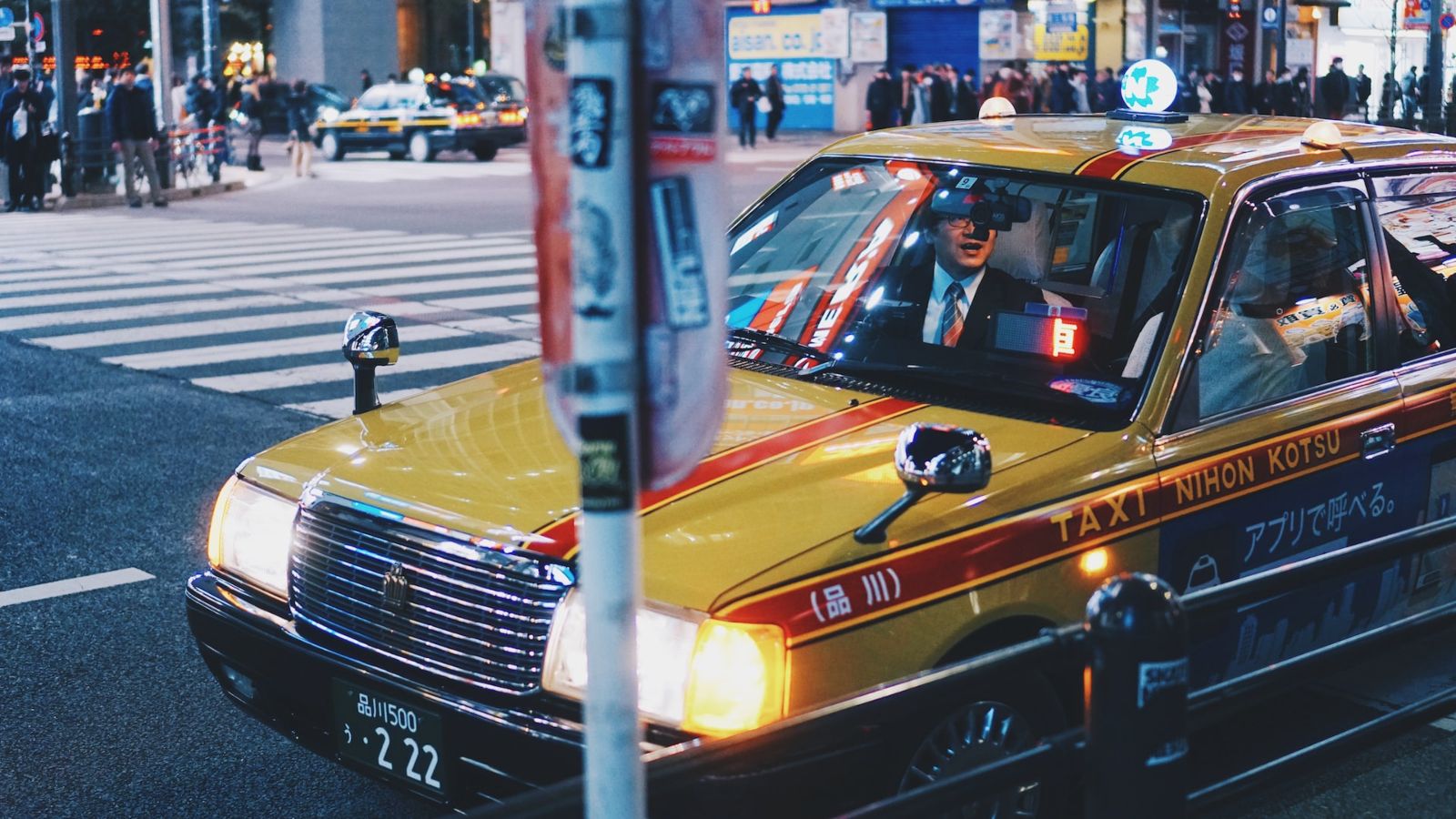
Rideshare Apps
In addition to taxis, Japan has a number of rideshare apps that service various regions. The concept of rideshare vehicles in Japan hasn’t taken off as it has in other parts of the world, so this option may be limited to larger cities. Some of the most common rideshare apps in Japan are Uber, Grab, Ola and DiDi. Given the small market and lack of competitiveness, many rideshares are not much cheaper than a taxi. But there may be an option to earn frequent flyer points through rideshare, particularly GrabPoints which can be converted to Singapore Airlines KrisFlyer miles.
Travelling between cities in Japan
Japan Rail (JR) Pass
The Japan Railways Group (JR) is Japan’s top railway company, operating an extensive network of trains throughout the country. JR owns the network of bullet trains in Japan, which operate at high speeds across several prefectures. In addition to bullet trains, the JR Group also operate local trains, buses, the ferry between Hiroshima and Miyajima Island, and the Tokyo Monorail from Haneda Airport.
Many foreigners choose to purchase a JR Pass when they travel to Japan. The JR Pass offers unlimited trips on JR services for seven, 14 or 21 consecutive days. JR Passes can’t be purchased in Japan and must be bought in your home country before you depart. Once you arrive in Japan, you can activate your JR Pass at a JR office located in most airports and major train stations. The day you activate your JR Pass counts as day one. So if you’ve got cross-country travel scheduled later in your trip, it may be wise to activate your pass at a later date to maximise its value.
The cost of a JR Pass starts at around $340 for a 7-day adult pass in an ordinary car. For comparison, a one-way train ticket between Tokyo and Osaka is roughly $150. In saying that, a JR Pass isn’t necessary to ride JR trains in Japan, as individual tickets can be purchased.
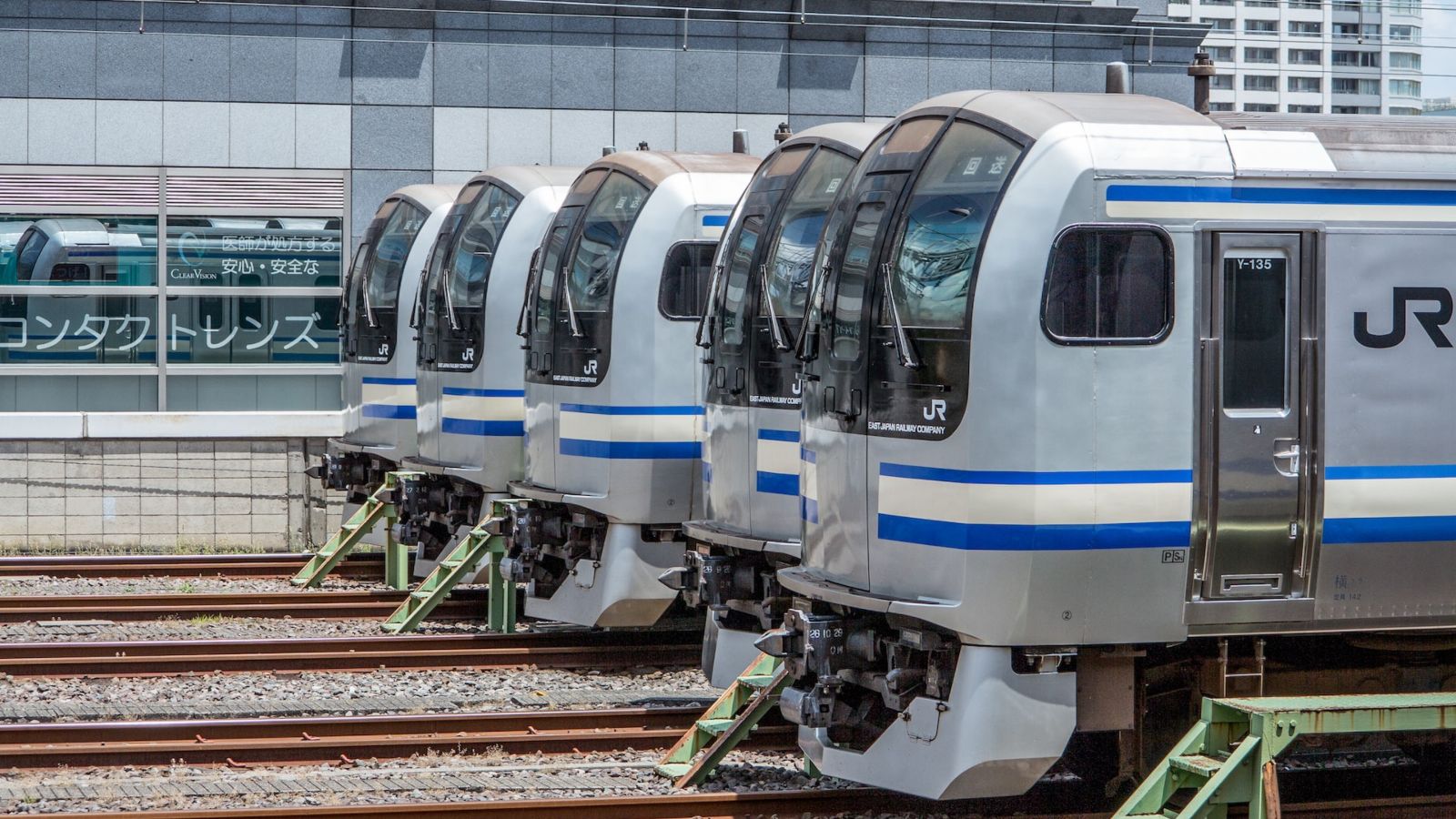
Bullet train
A highlight for many first-time visitors to Japan is riding an ultra-fast train. Japan’s bullet trains can reach speeds of up to 320 kilometres per hour and are often the fastest and easiest way to travel between cities. A JR Pass can be used on bullet trains, with the exception of Nozomi and Mizuho services. If you don’t hold a JR Pass, bullet train tickets can be purchased individually.
There are two main cars on bullet trains – ordinary cars and green cars. The latter is a luxurious option that offers more space and a variety of onboard services, depending on the route. Green cars are also generally less crowded. But if you’re after a more cost-effective option when travelling on bullet trains, ordinary cars are just as comfortable.
You don’t need to pre-book a bullet train ticket in advance, nor do you need to reserve a seat. But it’s often a good idea if you’re travelling at a busy time.
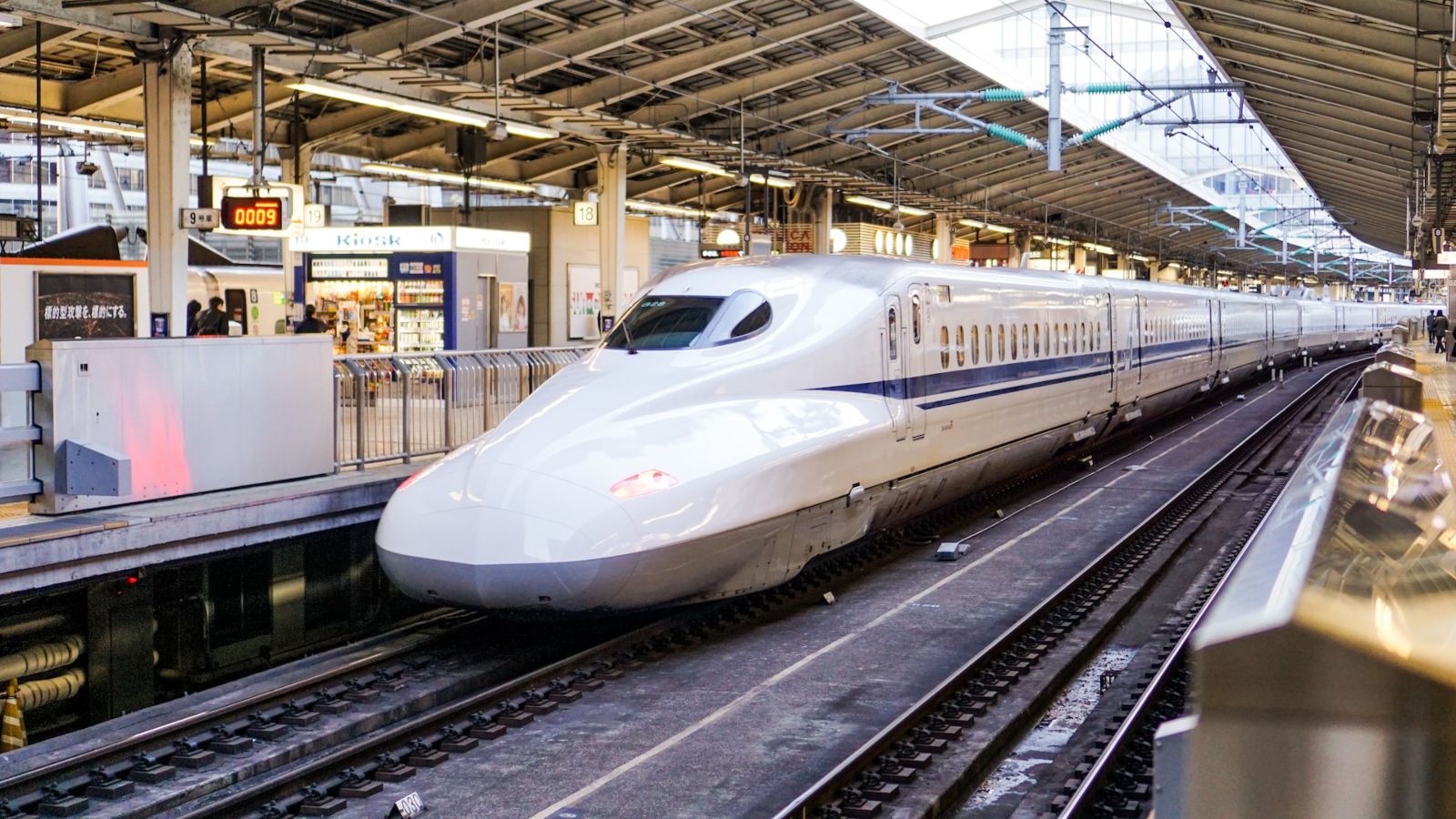
Bus
Highway buses and overnight buses are another way to travel between cities in Japan. It’s the cheapest option compared to flights and trains, and buses are clean, comfortable and safe. Many bus terminals are located near major train stations, making them an accessible way to get around Japan. Various companies operate buses between cities in Japan, including JR Bus routes. While buses take significantly longer, they’re incredibly budget-friendly and you’ll be able to enjoy some breathtaking views.
Travel to Japan from Australia
Once you understand the basics, getting around Japan is easy. And travelling to Japan from Australia doesn’t have to be difficult, either.
With direct flights from Australia, you could be lapping up the sights and sounds of Japan in no time.
To help you plan your trip, check out all of our guides to Japan, including how to choose the best accommodation, the best time of year to visit, and must-try food for every traveller.
Featured image: TopoloGiraffe, Unsplash
FAQs
A Japan Rail (JR) Pass is a railway pass only available to foreigners. The JR Pass allows unlimited travel across the extensive JR network for a period of seven, 14 or 21 consecutive days. It’s one of the most cost-effective ways for tourists to travel around Japan.
A JR Pass is not required when travelling to Japan as tickets for JR services can be purchased individually. However, many tourists choose to purchase a JR Pass as it provides excellent value for money.
Qantas, Jetstar, JAL and ANA operate direct flights between Australia and Japan.
You can fly direct to Japan from Australia with flights departing from Melbourne, Sydney and Cairns.
Haneda International Airport (HND) is the closest airport to Tokyo. It is located 30 kilometres from central Tokyo with a monorail that can take you there in 15 minutes. Narita International Airport (NRT) is located around 64 kilometres from central Tokyo and the train journey takes approximately one hour.
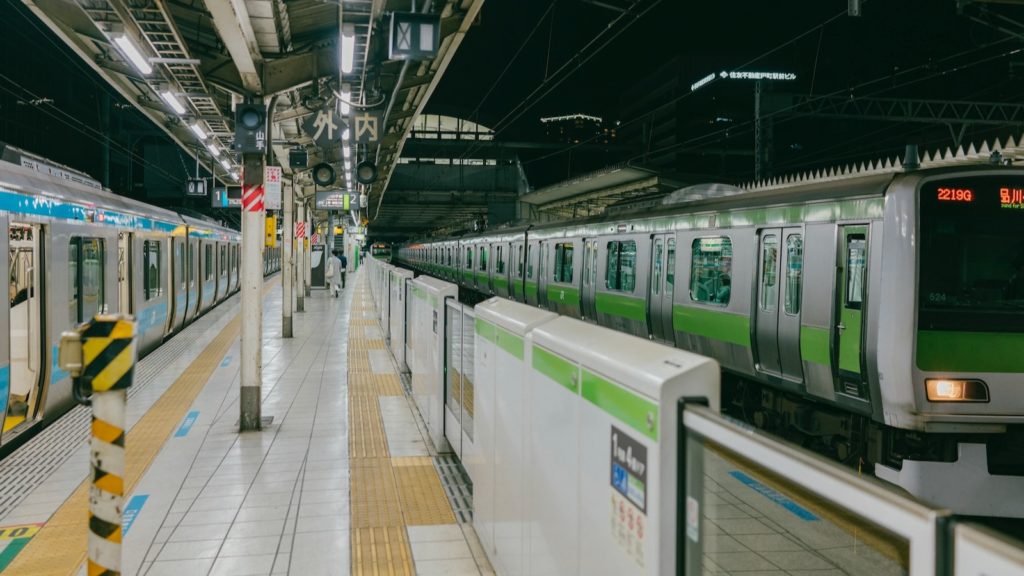

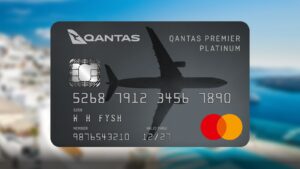



Community